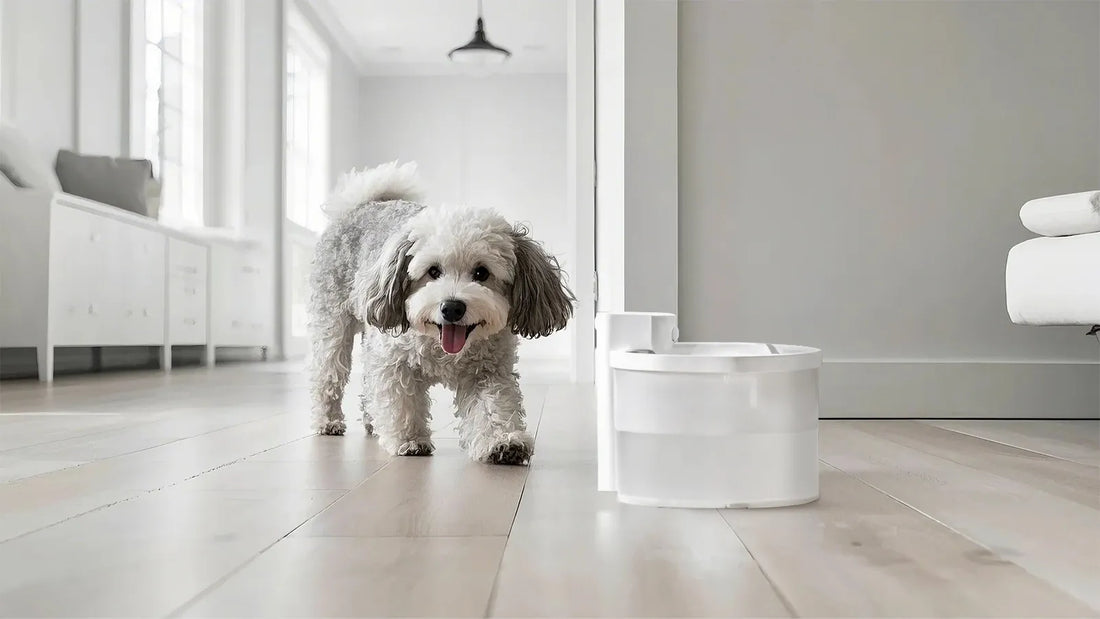If you've ever watched your dog devour their meal in seconds, you know how concerning it can be. Rapid eating can lead to a host of health issues, from choking to bloating. Fortunately, a food bowl to slow dog eating can be a game-changer for your furry friend. This article delves into the benefits of these specialized bowls, the different types available, and how to choose the best one for your pet.
Why Slow Eating Matters for Dogs
Rapid eating is a common issue among dogs, but it's not just a matter of manners. When dogs eat too quickly, they swallow large amounts of air along with their food. This can lead to serious health problems such as:
- Bloat: A life-threatening condition where the stomach fills with gas and twists on itself.
- Choking: Large chunks of food can get stuck in the throat.
- Vomiting: Eating too fast can cause your dog to regurgitate their meal.
- Obesity: Rapid eating can lead to overeating, contributing to weight gain.
By using a food bowl to slow dog eating, you can help mitigate these risks and promote healthier eating habits.
Types of Slow Feed Dog Bowls
There are several types of food bowls designed to slow down your dog's eating. Each type has its unique features and benefits. Here are some of the most popular options:
Maze Bowls
Maze bowls feature intricate patterns or ridges that force your dog to navigate around obstacles to reach their food. This slows down their eating pace significantly. These bowls are ideal for dogs that tend to gulp their food without chewing.
Puzzle Bowls
Puzzle bowls take the concept of maze bowls a step further by incorporating interactive elements. Your dog must solve a simple puzzle to access their food, which not only slows down eating but also provides mental stimulation.
Portion Control Bowls
Portion control bowls are designed with separate compartments that allow you to divide your dog's meal into smaller portions. This encourages your dog to eat more slowly and helps prevent overeating.
Raised Bowls
Raised bowls elevate the food off the ground, which can help reduce the amount of air your dog swallows while eating. While not specifically designed to slow eating, raised bowls can be a good option for dogs prone to bloat.
How to Choose the Right Slow Feed Bowl
With so many options available, choosing the right food bowl to slow dog eating can be overwhelming. Here are some factors to consider:
Size and Breed
The size of your dog and their breed can influence the type of bowl you choose. Larger breeds may require a more robust bowl with deeper ridges, while smaller breeds might benefit from a bowl with smaller obstacles.
Material
Slow feed bowls come in various materials, including plastic, stainless steel, and ceramic. Each material has its pros and cons. Plastic bowls are lightweight and affordable but may not be as durable. Stainless steel bowls are durable and easy to clean, while ceramic bowls are stylish but can be heavy and fragile.
Ease of Cleaning
Some slow feed bowls have intricate designs that can be challenging to clean. Look for bowls that are dishwasher safe or easy to hand wash to ensure proper hygiene.
Durability
Dogs can be rough on their bowls, especially if they're frustrated by the slow feeding mechanism. Choose a bowl made from durable materials that can withstand your dog's chewing and scratching.
Tips for Transitioning to a Slow Feed Bowl
Switching to a food bowl to slow dog eating may require some adjustment for your pet. Here are some tips to make the transition smoother:
- Start Slowly: Introduce the new bowl gradually, allowing your dog to get used to the new eating pace.
- Monitor Your Dog: Keep an eye on your dog during the first few meals to ensure they're adapting well and not becoming frustrated.
- Use Treats: Encourage your dog to use the new bowl by placing treats in it initially.
- Be Patient: Some dogs may take longer to adjust than others. Be patient and consistent with the new feeding routine.
Additional Benefits of Slow Feed Bowls
Beyond slowing down eating, these bowls offer several additional benefits:
Mental Stimulation
Puzzle and maze bowls provide mental stimulation, which can be especially beneficial for high-energy dogs. This can help reduce boredom and destructive behaviors.
Improved Digestion
Eating more slowly allows your dog's digestive system to process food more efficiently, reducing the risk of digestive issues.
Weight Management
By slowing down eating, these bowls can help prevent overeating, aiding in weight management and reducing the risk of obesity.
Common Myths About Slow Feed Bowls
There are several misconceptions about food bowls to slow dog eating. Let's debunk some of the most common myths:
Myth 1: Slow Feed Bowls Are Only for Overweight Dogs
While slow feed bowls can help with weight management, they're beneficial for all dogs, regardless of their weight. Rapid eating can lead to various health issues, making these bowls a good choice for any dog.
Myth 2: Slow Feed Bowls Are Difficult to Clean
While some bowls have intricate designs, many are easy to clean. Look for bowls that are dishwasher safe or have smooth surfaces that are easy to hand wash.
Myth 3: Slow Feed Bowls Are Expensive
There are slow feed bowls available at various price points, making them accessible for most pet owners. The long-term health benefits often outweigh the initial cost.
Final Thoughts
Investing in a food bowl to slow dog eating is a simple yet effective way to improve your pet's health and well-being. By slowing down their eating pace, you can reduce the risk of serious health issues, provide mental stimulation, and promote better digestion. With so many options available, there's a slow feed bowl out there to suit every dog's needs. Make the switch today and watch your furry friend enjoy their meals in a healthier, more relaxed manner.













